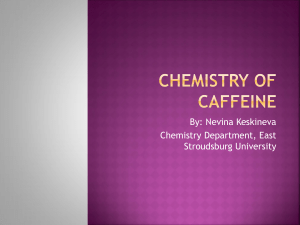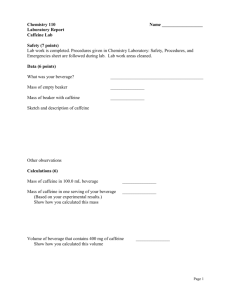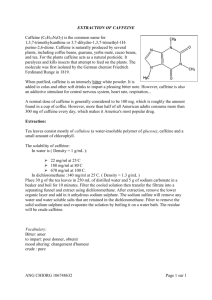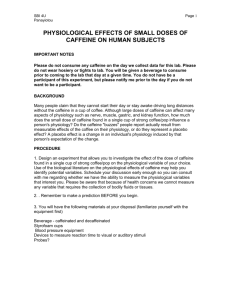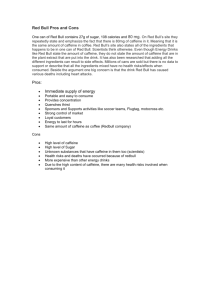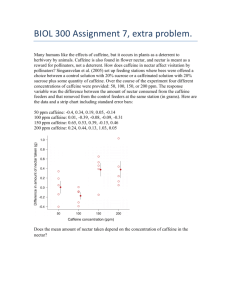Caffeine Transport in Single Cup Coffee Packets
advertisement
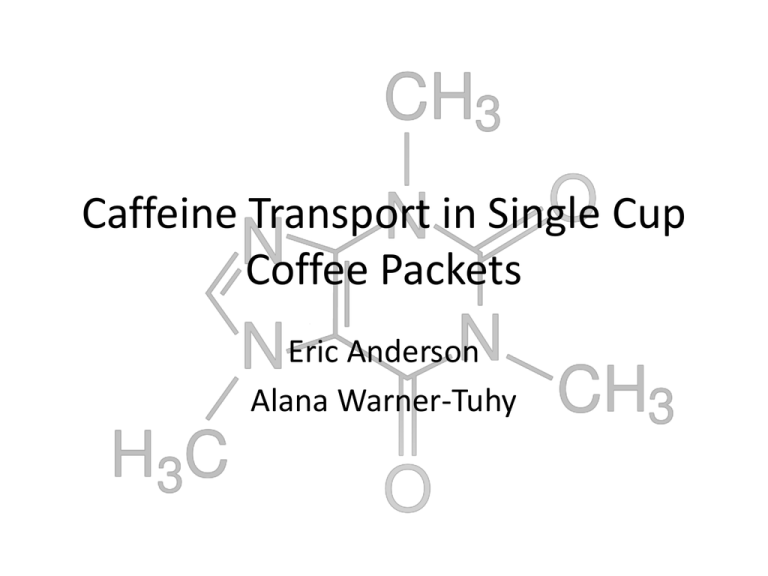
Caffeine Transport in Single Cup Coffee Packets Eric Anderson Alana Warner-Tuhy Introduction • • • • • Reason for Study Experimental Parameters Results Conclusions References Justification for Study • Warning on the back of coffee packet • How much does brewing conditions affect the final caffeine concentration? Experimental Parameters • Three different brewing methods – No interference – Dunk bag in water, as per directions – Continuously stir • Other than convective conditions, all other parameters were constant Purification and Extraction Method 1 Results Color and Caffeine Comparison 1 0.9 Nomalized Concentration 0.8 0.7 0.6 0.5 0.4 0.3 Color 0.2 0.1 Caffeine 0 0 1 2 3 4 5 Time (min) 6 7 8 9 10 Color Comparison Color Dependence on Time 1.400 1.200 Absorbance 1.000 0.800 0.600 0.400 0.200 Still Dunked for 15 sec at 1 min Well Mixed 0.000 0 10 20 30 Time (min) 40 50 60 Caffeine Conc. Comparison Caffeine Concentration 1 0.9 Caffeine Concentration (mg/mL) 0.8 0.7 0.6 Still 0.5 Dunked 0.4 Stirred 0.3 0.2 0.1 0 0 10 20 30 40 Time (min) 50 60 70 Final Caffeine Comparison Method Time (min) Final Concentration (mg/ml) 1 5 0.12 2 5 0.14 3 5 0.13 1 10 0.22 2 10 0.14 3 10 0.52 1 60 0.39 2 60 0.15 3 60 0.92 Results 5 Minutes – Any method will work 10 Minutes – Double the caffeine by leaving coffee undisturbed – 4 times the caffeine by continuously stirring coffee Conclusions • The convective component greatly affects the final caffeine concentration • Color is not an adequate indicator of caffeine concentration References • Spiro, M., Lam, P., Food Chemistry, 1995 , vol. 54, p393-396.

